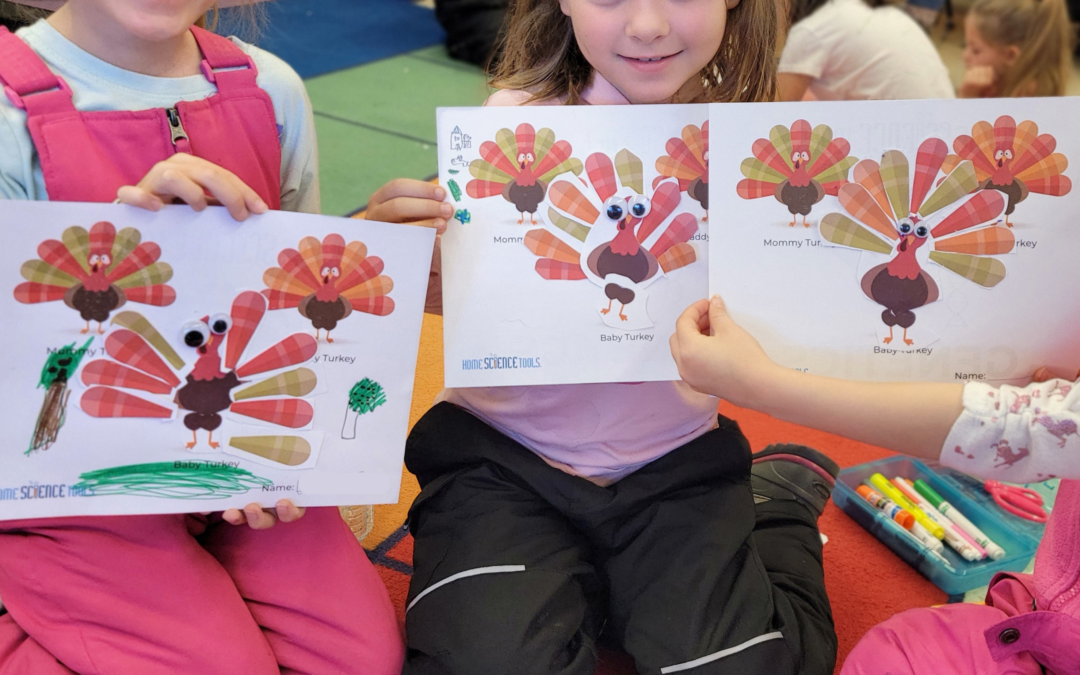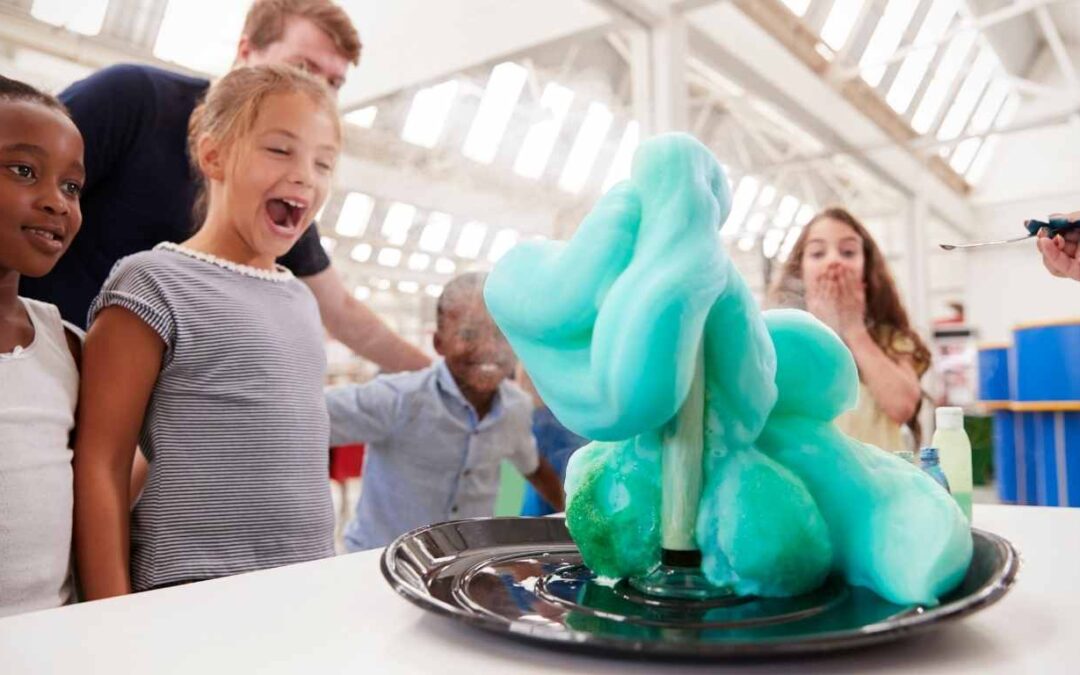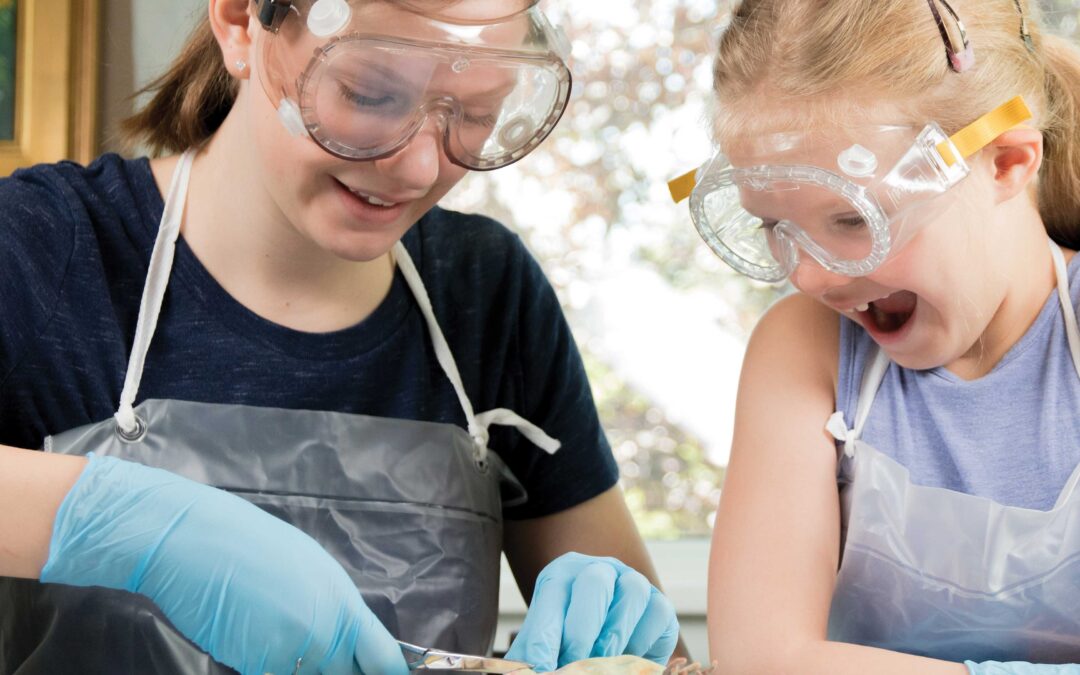
Test Halloween candy for glucose (a type of simple sugar) and find out which one has the most. Although we used mainly lab supplies for this project, you could use household supplies and get similar results. Instead of test tubes, use glasses. Substitute a pot, burner, and heat safe glass for the water bath, and so on.
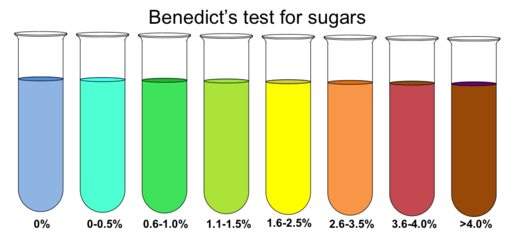
Test Halloween Candy for Glucose Video
What You Need:
- 3-4 different types of Halloween candy (Hint: We think non-chocolate types work best: Smarties, lollipops, etc.)
- Disposable plastic cups*
- Benedict’s solution
- Cutting board, knife, and fork
- Metal spatula
- 400 ml beaker
- Wax pencil
- Lab burner and stand
- Disposable pipettes*
- Small glass test tubes*
- Test tube rack
- Test tube clamp
- Safety goggles
- Gloves
- Adult helper
*Equal to the number of candies being tested
What You Do:
1. Before beginning, put on your goggles and gloves. Safety first!
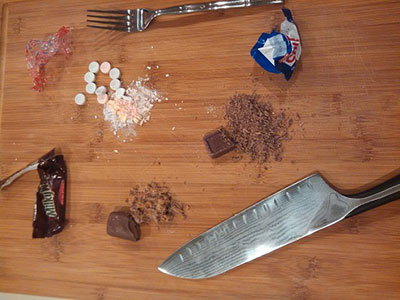
2. First you’ll prepare a solution for each candy you’re testing. Use a knife to finely chop them, or break them into small pieces and grind them up using the back of a fork. Clean the knife and fork between each candy to avoid cross-contaminating the samples.
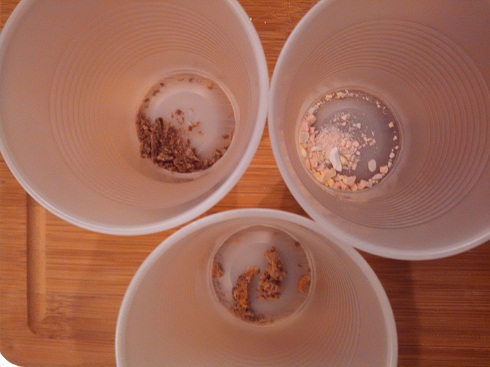
3. In a clean cup, measure 1 level spatula scoop of ground candy. Then repeat with additional candy types.
4. Use the pipette to add 3 droppers full of hot water to each cup. Stir, dissolving the candy as much as you can to make liquid solutions. Use the same amount of ground candy and water in each solution and clean the spatula in between.
5. Label each solution, and observe and record the color. Predict (make a hypothesis) which candy you think contains the most glucose.
6. Using a different pipette for each solution, add 25 drops of one candy solution the first test tube. Repeat with remaining candies in clean test tubes.
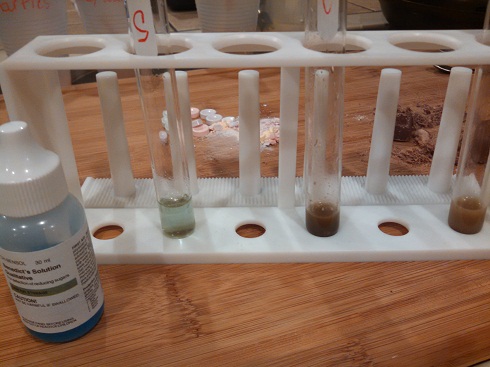
7. Label each test tube with the wax pencil.
8. Add 5 drops of Benedict’s solution to each test tube. Gently swirl to mix.
9. Place the stand over the lab burner. According to the manufacturer’s directions, use the lab burner to heat 300 ml of water in the beaker.
10. When the water boils (large bubbles appear at the surface), turn the heat to low and add the test tubes, placing them carefully inside the beaker.
11. After 5 minutes, turn the burner off.
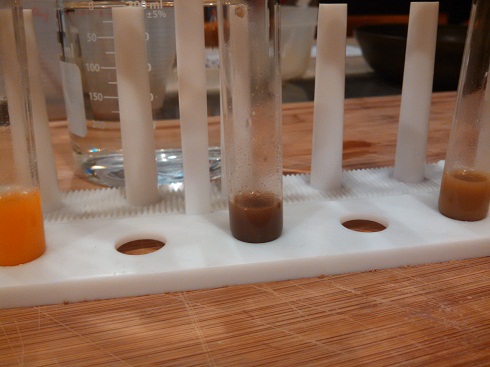
12. Use the test tube clamp to remove the test tubes from the beaker and place them in the test tube rack.
13. Allow the solutions to cool for several minutes. Swirl the contents of each test tube, and observe and record the color of the liquid.
When you test Halloween candy for glucose, any color change (green, yellow, orange, red) means there is glucose in the solution. A dark red-brown solution indicates more glucose than any other color. Using the chart above as a guide, which candy contains the most glucose? Which Halloween candy has the least glucose? Was your hypothesis correct?
What Happened:
Glucose is a simple sugar that plants make during photosynthesis. Like all carbohydrates, it’s made of hydrogen, carbon, and oxygen. Glucose is essential to life! It is the primary source of energy for our body’s cells, and can enter our bloodstream quickly to provide energy right away. Without it, our bodies would not function well. Plus, glucose is the primary energy source used by brain cells! Without enough glucose, brain function can slow down.
Benedict’s solutions (also called Fehling’s solution) is a bright blue liquid. It’s made of copper sulfate, sodium citrate, and sodium carbonate. While it’s usually bright blue, when it’s mixed with a solution that contains glucose, it changes color! Depending on the sugar concentration, it turns green, yellow, deep-red or brown.
In addition to glucose, there are other types of sugar. Fructose comes from honey, fruit and vegetables. Most table sugar is made of sucrose. However, since this test only detects the presence of glucose, you can’t tell if these candies have other types of sugar as well.
For Further Study:
Now that you’ve experimented to test Halloween candy for glucose, what else could you test? Does sugar-free Halloween candy have glucose, too? For further testing, compare different foods that aren’t typically thought of as sweet, like milk or bread, as well as other types of sweet foods besides candy, like fruit and soda pop. Alternatively, consider using glucose test strips instead of Benedict’s solution and see how that affects your results. Afterward, think about and discuss why knowing which foods contain a lot of glucose might be beneficial.
Download the free printable to test candy for glucose > >


